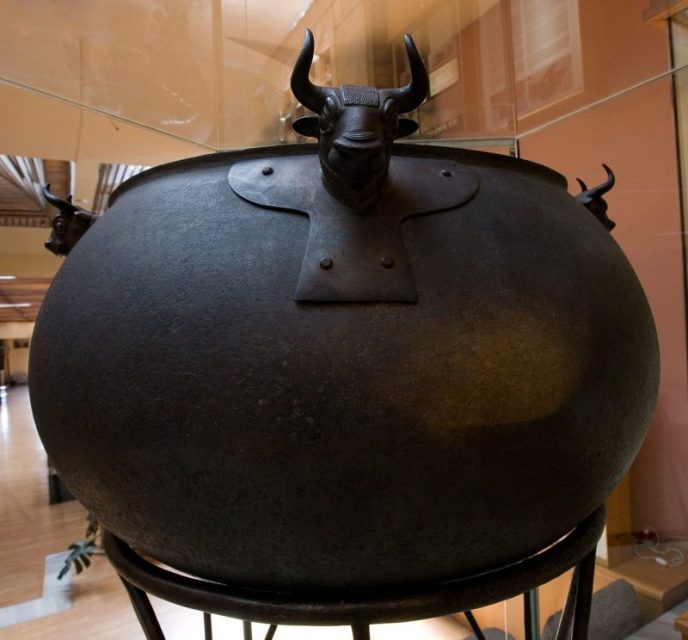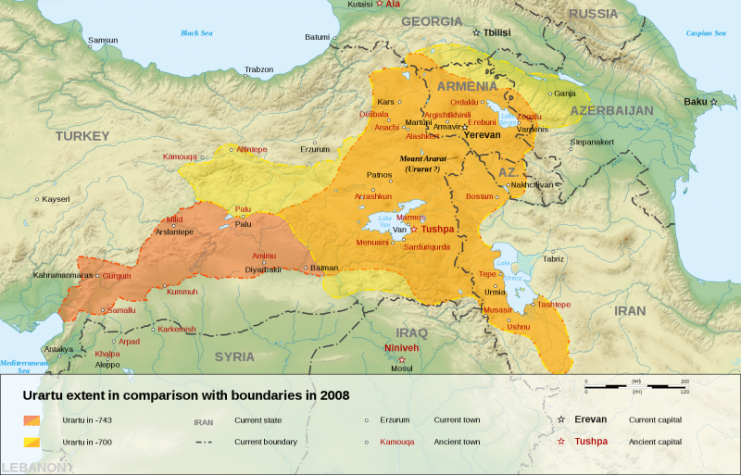Researchers from Van Yüzüncü Yıl University and a team of divers have discovered what is believed to be the remains of an ancient fortress at the bottom of Lake Van in Turkey. The head of the diving team and underwater videographer Tahsin Ceylan said that they were told by other divers and archaeologists that there was nothing to find in the water.
The team actually found an extensive site of approximately a kilometer in size. Fortress walls of around 10 to 13 feet in height are visible beneath the lake. Calling the discovery a “miracle,” Ceylan said that archaeologists would travel to the area to research and provide information on the site.
Ceylan said in an interview with the Hürriyet Daily News that the lake had been settled by many civilizations over the course of 600,000 years. It was believed in ancient times that the lake had mysterious properties. The team is now working to reveal the secrets contained in the site.
Researchers believe that the fortress was built by the Urartu civilization sometime between the 9th and 6th centuries BCE.
Lake Van is located near the border of Turkey and Iran. Known for being the largest saltwater lake in the world, it is also the largest endorheic body of water on earth (meaning it is the largest body of water with no connection to the ocean).
Local legends stated that there were Urartu ruins under the water of the lake, but archaeologists did not believe that anything was down there. The team responsible for discovering the fortress was repeatedly told that looking under the lake was a waste of time.

With no outlet to the ocean, the water level of Lake Van can rise and fall dramatically. The Urartu built their civilization on the shores of the lake when levels were at a low point. The divers were able to see walls from nine to fourteen feet tall, the rest was buried under mud. The team is preparing to begin underwater excavation to learn more about the people who lived in the area before the water levels rose.
The Urartu was also known as the Kingdom of Van. Their nation extended from modern-day Turkey through Armenia and Iran. It is believed that Lake Van was very important to the Urartu.
Part of an ancient Urartu castle in the city is also underwater. Tests were conducted on that castle that show it to be almost 3,000 years old.
The true origin of the people of Urartu is unknown. Some historians think these people migrated from somewhere to the west into the Armenian plateau, then for the most part known as Nairi. They called themselves Khaldians or children of the god Khaldis, just as the name of the Assyrians reflects the name of their god Assur.

The name of the kingdom is handed down to us from the Assyrians, not from the Urartu themselves. Nothing is known about the beginnings of the kingdom. The people eventually became known for their metalwork. They spoke a language related to Hurrian (which is not known to be connected to any other language in the world). The Urartu used Assyrian cuneiform for their written language.
Just as the kingdom’s beginnings have been lost to the mists of time, so too the ending of the kingdom is a mystery. It is known that the Urartu kingdom came to an end between 585 and 590 BCE, but no account of the end has been found, and the exact date their kingdom ended is under dispute by archaeologists.
The same team that found this fortress made a different discovery last year in the same lake. They discovered a 1.5-kilometer area of strange stalagmites they referred to as “underwater fairy chimneys.”
Earlier this year the same team also found the remains of a Russian ship that was thought to have sunk in 1948.
